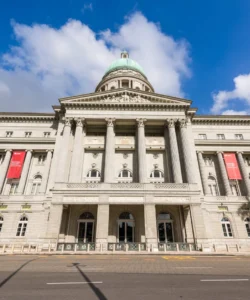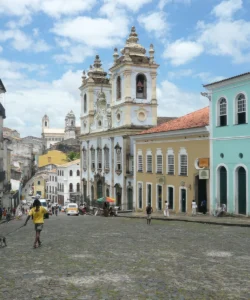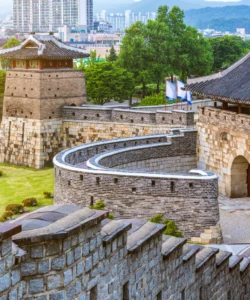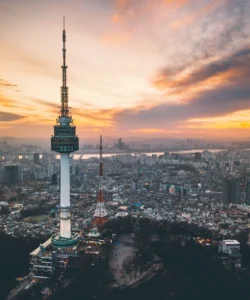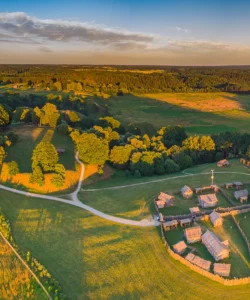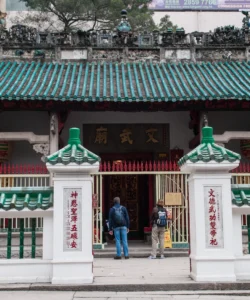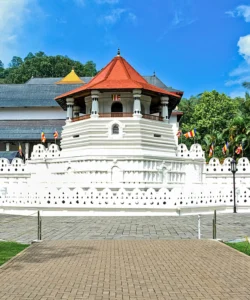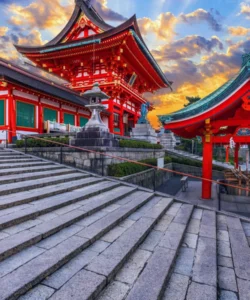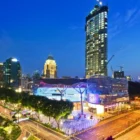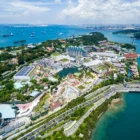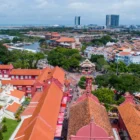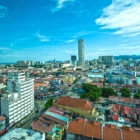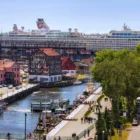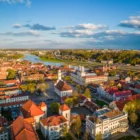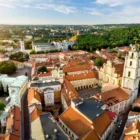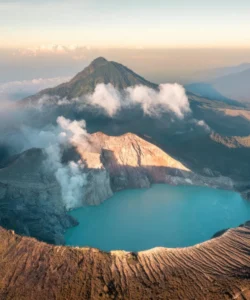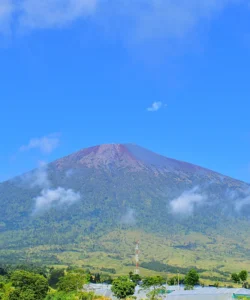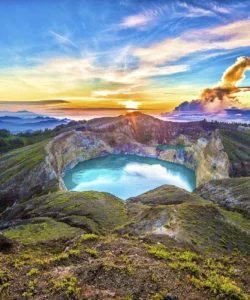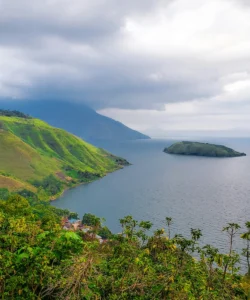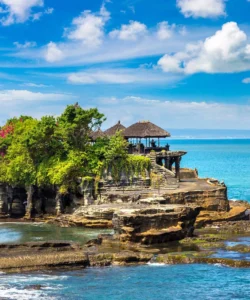Changi International Airport, often simply called Changi Airport, is a sprawling, award-winning aviation hub in Singapore, consistently recognized as one of the best airports in the world. It transcends the traditional concept of an airport, offering a blend of world-class connectivity, groundbreaking architecture, and unparalleled passenger amenities, making it a destination in itself.
Name: Singapore Changi Airport (SIN)
Address: Airport Blvd, Singapore.
It is located on the eastern edge of Singapore Island, approximately 20-25 kilometers (12-16 miles) from the city center.
How to Get There:
Changi Airport is exceptionally well-connected to Singapore’s city center and other parts of the island:
- By MRT (Mass Rapid Transit – Subway): Changi Airport is the terminus of the East-West (Green) line. The MRT station is directly integrated with Terminal 2 and Terminal 3. From Terminal 1, you can walk to T2/T3 via a skybridge. From Terminal 4, there’s a free shuttle bus to T2/T3 to access the MRT. The journey to the city center (e.g., City Hall) takes about 30-45 minutes and involves one transfer at Tanah Merah station.
- By Bus: Public bus services (e.g., Bus 36) operate from all terminals to various parts of Singapore, including the city center. The journey is longer (around 1 hour to the city center) but can be more direct for certain locations.
- By Taxi/Ride-Sharing (Grab, Gojek, Tada): Taxis and ride-sharing services are readily available at all terminals, offering a direct and convenient, though more expensive, way to reach any destination in Singapore. A ride to the city center typically takes 20-30 minutes.
- By Car: Major expressways connect the airport to the rest of the island. Ample parking is available at all terminals and at Jewel Changi Airport.
- Inter-Terminal Travel: The four main terminals (T1, T2, T3, T4) are connected by free Skytrain services (within transit and public areas) and pedestrian link bridges, making transfers seamless. Jewel Changi Airport is directly connected to T1, and accessible from T2 and T3 via link bridges.
Landscape and Architecture:
Changi Airport is a stunning example of modern architectural design, seamlessly integrating lush greenery and leisure facilities within an airport environment.
- Architectural Vision: The airport’s design philosophy embraces Singapore’s identity as a “City in a Garden,” bringing nature and leisure into a high-tech transportation hub. Its terminals are spacious, bright, and feature extensive use of glass, steel, and natural light.
- Terminal Design: Each of the four active terminals (T1, T2, T3, T4) has its own distinct character, but all share a focus on passenger comfort, efficiency, and aesthetics. T1, T2, and T3 are connected in a horseshoe shape, with T4 located separately but easily accessible via shuttle.
- Jewel Changi Airport: The most striking architectural and landscape marvel is Jewel Changi Airport, a massive, multi-use complex designed by architect Moshe Safdie, connecting Terminals 1, 2, and 3.
- HSBC Rain Vortex: At the heart of Jewel is the world’s tallest indoor waterfall, a dramatic 40-meter (131-foot) cascade of water that plunges from an oculus in the glass dome roof. At night, it transforms into a mesmerizing light and sound show.
- Shiseido Forest Valley: Surrounding the Rain Vortex is a terraced five-story indoor garden with walking trails, more than 200 species of trees and flora, and quiet seating areas, creating an immersive rainforest experience.
- Canopy Park: Located on the top level (L5) of Jewel, this 14,000 sqm space features various attractions integrated within garden spaces, including:
- Sky Nets: Bouncing and walking nets suspended high above the ground.
- Canopy Bridge: A glass-bottomed bridge offering thrilling views down to the Forest Valley.
- Hedge Maze & Mirror Maze: Playful, interactive mazes.
- Discovery Slides: Large, sculpted slides for fun.
- Topiary Walk and various sculptural gardens.
- Themed Gardens within Terminals: Beyond Jewel, each terminal boasts its own unique themed gardens, such as:
- Butterfly Garden (T3): A lush habitat with over 1,000 butterflies.
- Cactus Garden (T1): A rooftop garden with over 100 species of cacti and succulents.
- Orchid Garden (T2): Showcasing Singapore’s national flower.
- Sunflower Garden (T2): Another rooftop garden.
- Art Installations: Changi is also home to various unique art installations, such as “Kinetic Rain” (T1), a kinetic sculpture made of bronze droplets that form various shapes, and “A Million Times” (T2), a massive clock artwork.
What Makes It Famous:
- World’s Best Airport (Multiple Times): Changi Airport has consistently topped numerous “World’s Best Airport” rankings by Skytrax and other reputable organizations for many years, a testament to its exceptional passenger experience, efficiency, and facilities. (While it recently moved to 2nd spot in some 2025 rankings, its reputation remains stellar).
- Jewel Changi Airport: The addition of Jewel transformed Changi into a global icon, making it a destination in itself. The HSBC Rain Vortex, Shiseido Forest Valley, and Canopy Park attractions are world-renowned.
- Unmatched Amenities and Services: Changi goes far beyond basic airport functions. It offers an astonishing array of amenities, including:
- Free movie theaters (T2 & T3)
- Swimming pool and jacuzzi (T1)
- Shopping paradise with duty-free offerings (over 300 retail stores across terminals)
- Diverse dining options (hundreds of restaurants and cafes)
- Snooze lounges and transit hotels
- Playgrounds, entertainment decks (Xbox, PlayStation)
- Themed gardens and art installations
- Efficient and fast immigration/security processes (including biometric authentication)
- Transit Hub Excellence: It’s designed to make layovers enjoyable and memorable, with a seamless transfer system and enough attractions to keep passengers entertained for hours, cementing its status as a global transit hub, especially for flights between Europe/Australia and Southeast Asia.
- Biophilic Design and Sustainability: The airport’s commitment to integrating nature, natural light, and green spaces, along with rainwater harvesting (for the Rain Vortex) and efficient ventilation, showcases a leading example of sustainable and biophilic design in a major infrastructure project.
Differences from Some Other Wonders:
- Man-Made Infrastructure as a Tourist Attraction: Unlike natural wonders (Mount Kinabalu, Perhentian Islands) or historical cities (George Town, Malacca City), Changi Airport is a modern, man-made infrastructure project. Its “wonder” lies in its functional efficiency combined with its leisure, retail, and naturalistic attractions, transforming a utility into a destination.
- “Airport as a Destination”: While other airports are primarily transit points, Changi is explicitly designed to be a destination in itself, encouraging both travelers and local residents to spend time there beyond their flight schedules. Jewel is the epitome of this concept.
- Integration of Extensive Nature within an Indoor Setting: The scale and sophistication of the indoor gardens (Forest Valley, Canopy Park) and the world’s tallest indoor waterfall (Rain Vortex) within an airport complex are unparalleled. This fusion of a lush natural environment with a modern, climate-controlled indoor space is unique.
- Focus on Passenger Experience and Leisure: While efficiency is key, Changi’s fame is heavily driven by its commitment to enhancing the passenger experience through leisure, entertainment, and relaxation facilities. This goes far beyond what is typically expected from an airport.
- Constantly Evolving and Innovating: Changi Airport has a continuous drive for innovation and expansion (e.g., upcoming Terminal 5), constantly setting new benchmarks for airport design and operations.
- Highly Polished and Technologically Advanced: Compared to more rustic or historically preserved wonders, Changi is a beacon of modern technology and meticulous planning, from its automated baggage handling to biometric immigration.































